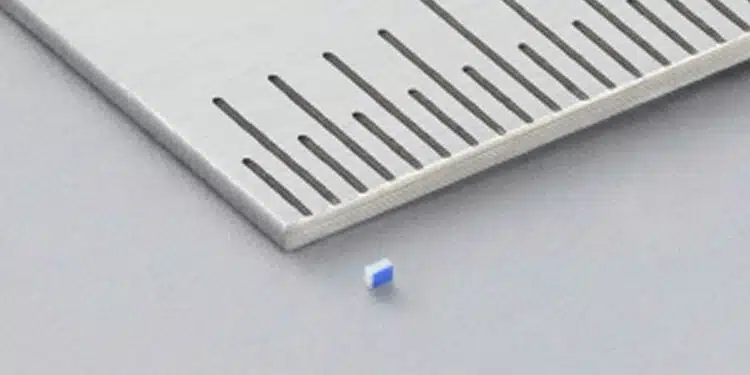Murata Manufacturing Co., Ltd. has commercialized the LQP02HQ_Z2 series automotive RF inductors for in-vehicle communication devices.
Despite its small, 01005 inch size, this product features quality performance that accommodates strict requirements, including the AEC-Q200*1qualification for the automotive industry. Mass production began in March 2025.
The automotive industry is seeing continuous evolution in sensing and communication functions in recent years due to the proliferation of autonomous driving technologies.
Along with the full-scale expansion of 5G service, V2X*2 is attracting notable attention. Using the existing LQP02HQ_02 series for consumer devices as the base, Murata achieved High-Q characteristics by applying the inductance control technique which was developed based on feedback from the connectivity module development site.
This new product has the reliability required for automotive infotainment and comfort devices. As a result, it enables stable signal transmission, contributing to robust connectivity in automobiles and base stations.
Specifications
| Product name | LQP02HQ_Z2 series |
|---|---|
| Size | 0.4 x 0.2 x 0.3 mm |
| Inductance range | 0.2 to 56 nH |
| Operating temperature range | -55 to 125℃ |
- *1AEC-Q200: One of the standards defined by the AEC (Automotive Electronics Council).
- *2V2X (Vehicle to Everything): Collective term for systems that connect individual vehicles (V2V: Vehicle to Vehicle), as well as vehicles and road signs, traffic lights, and other infrastructure (V2I: Vehicle to Infrastructure), via radio communication to share information. Mandating the installation of V2X systems is currently under review as it is a cornerstone of peripheral information sharing for autonomous driving.































